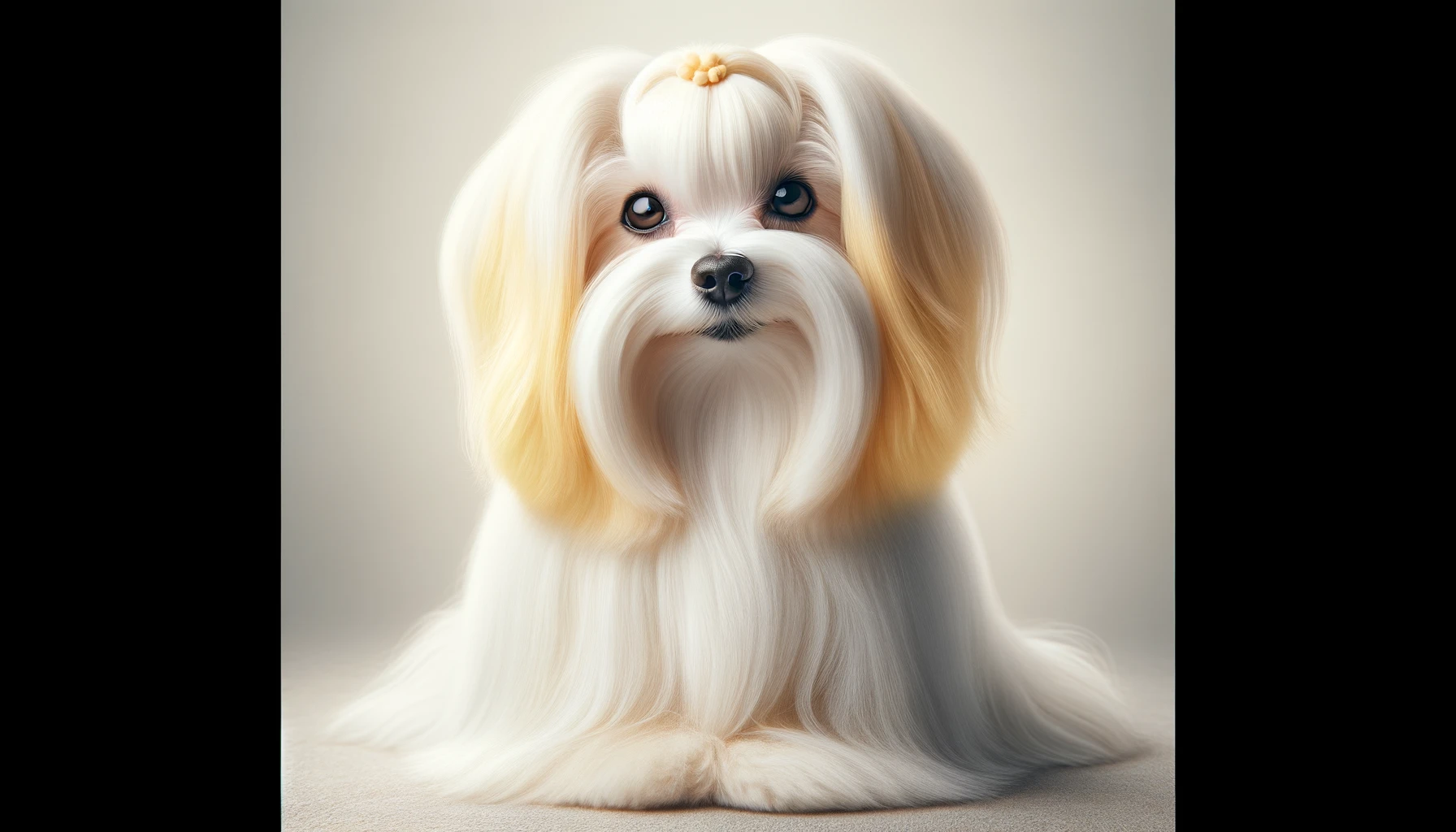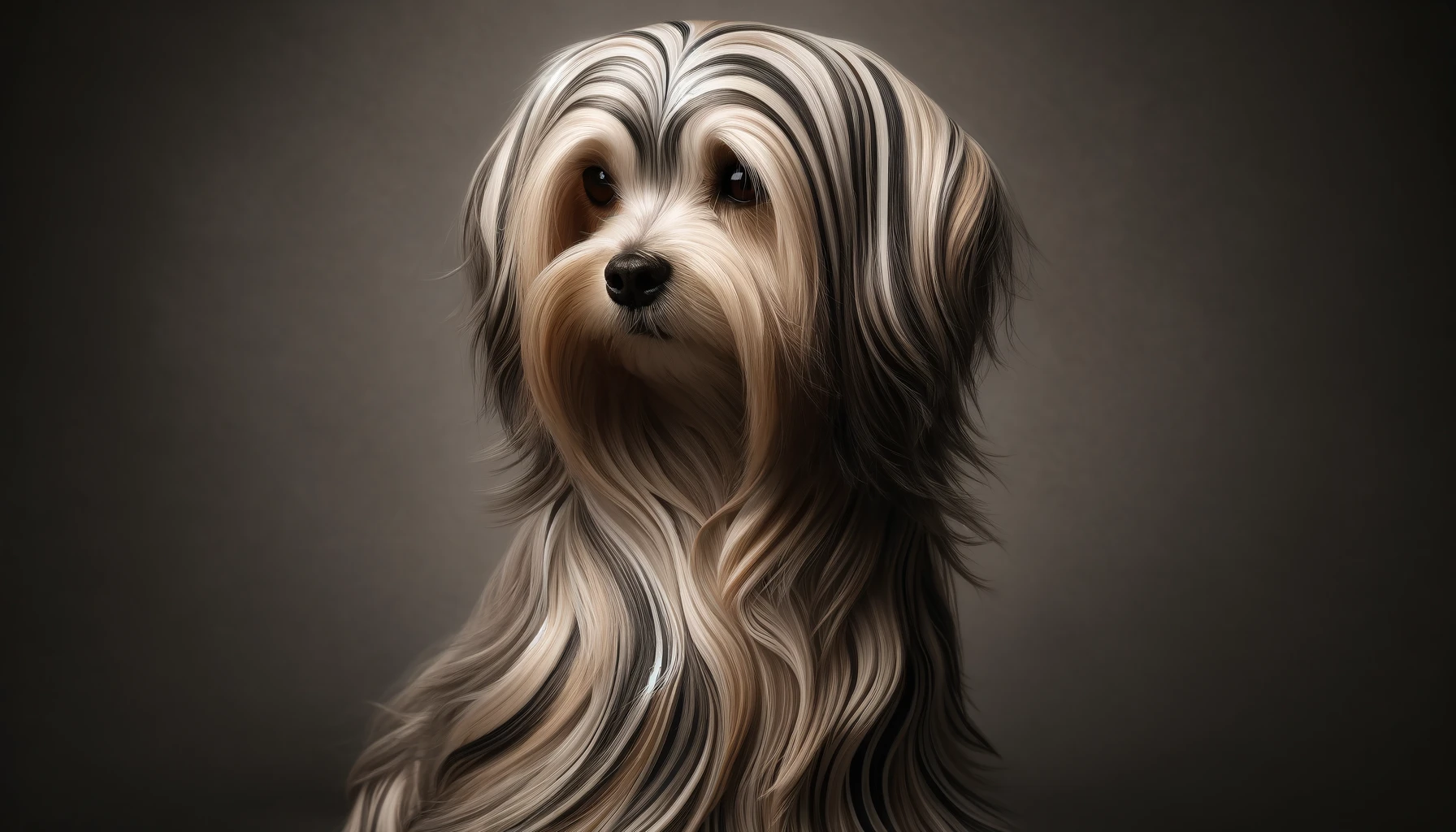
Malteses, beloved for their luxurious white coats and gentle, affectionate personalities, stand out as a popular breed among dog lovers worldwide. While traditionally recognized for their gleaming white fur, Maltese can exhibit subtle color variations, particularly noticeable in puppies or due to specific genetic factors. These small, elegant dogs have charmed their way into the hearts of owners for centuries, originally bred to be the quintessential lapdog of noble and royal families. Today, they are cherished not only for their beauty and companionship but also for their adaptability to various living environments and their hypoallergenic coats. This article delves into the seven stunning color variations of Maltese dogs, each of which highlights a unique aspect of the breed’s aesthetic appeal and brings a different dimension to the classic Maltese appearance.
1. Pure White

The most common and iconic coloration of the Maltese is pure white. This bright, eye-catching hue reflects the breed’s historical and traditional image as a luxurious and refined companion. The pure white coat is lush, long, and straight, flowing gracefully as the dog moves. This stunning coat not only serves as a striking visual hallmark but also has practical benefits, such as helping to keep the dog cool in sunny climates. To maintain pure white coloration, regular grooming and bathing are essential, as the Maltese’s coat can easily pick up dirt and stains, which may detract from its dazzling appearance.
2. Lemon and White

Lemon and white Maltese are a beautiful variation where soft, light yellow patches appear on the ears and sometimes on the body. These lemon markings are typically very subtle and may not be fully visible until the dog matures. The contrast between the pale lemon spots and the bright white of the rest of the coat adds a unique charm to these dogs. This color variation does not affect the quality or texture of the fur, which remains silky and long. Owners of lemon and white Malteses often find that these gentle hues complement the soft, amiable nature of their pets.
3. Light Tan and White

Similar to the lemon and white variety, light tan and white Malteses feature tan markings that are generally found on the ears and the back, albeit slightly darker than the lemon shades. These tan patches can vary from a light cream to a more distinct tan color, adding a touch of warmth to the dog’s overall appearance. Like other color variations, these markings are more often seen in puppies and can either become more prominent or fade as the dog ages. Maintaining the clarity and brightness of the white areas in the coat requires regular grooming to prevent the tan areas from darkening due to sun exposure or aging.
4. Silver and White

In the silver and white Maltese, the silver parts are not truly metallic but rather a dilute black that gives a soft, shimmering gray appearance. This rare and elegant color variation can make Maltese look particularly distinguished. The silver typically appears on the back and fades into the white on the belly and legs, creating a beautiful gradient effect. Owners should note that the silver coloring may take a few years to fully develop, starting from a darker shade in puppyhood and lightening as the dog matures.
5. Black and White

Black and white Malteses are extremely rare and are not recognized by all kennel clubs as a standard color. In this variation, black patches appear alongside the predominant white, often including a black mask over the face, which is highly unusual for the breed. This striking contrast can be quite dramatic, making the dogs stand out in any setting. However, potential owners should be cautious, as true black and white Malteses may suggest mixed breeding or a deviation from the breed standard.
6. Piebald

The piebald pattern in Malteses is characterized by irregular patches of white and another color, typically one of the previously mentioned lighter shades, like lemon or light tan. This variation follows a specific genetic pattern where the colors are distributed in a seemingly random fashion, creating a unique and striking appearance in each dog. Piebald Malteses are rare and often sought after for their distinctive looks.
7. Brindle

Brindle Malteses display a mix of colors in a striped pattern, typically involving shades of gray or brown. This variation is exceedingly rare and is often the result of complex genetic factors. The brindle pattern can vary widely, with some dogs showing clearly defined stripes and others having a more blended appearance. Like the black-and-white variation, a brindle Maltese may indicate some degree of mixed ancestry.
In summary, while the Maltese breed is often celebrated for its stunning white coat, several color variations can add diversity and individuality to these charming dogs. Each color variation brings its beauty and challenges in terms of grooming and maintenance. Regardless of color, Malteses remains one of the most beloved breeds, known for their friendly demeanor, luxurious coats, and history as regal companions.
Frequently Asked Questions About Maltese Colors
1. What is the standard color for a Maltese?
The standard color for Maltese is pure white, without any traces of lemon or other shades. This is the most recognized and preferred color for Malteses as it reflects the breed’s historical background as a refined, luxurious companion. The pure white coat highlights the breed’s elegant features and contributes to the Maltese’s popular perception as a beautiful and aristocratic dog. The breed standard specified by major kennel clubs like the American Kennel Club (AKC) and the Kennel Club (UK) demands that the coat be pure white, though slight lemon markings are permitted but not desired. The white coat should be long, silky, and straight, flowing over the sides of the body almost to the ground, which accentuates the breed’s graceful movements.
2. Are Maltese ever completely black?
No, a completely black Maltese is extremely rare and not recognized as standard by any major kennel club. Malteses are primarily known for their white coats, and any solid colors other than white indicate a departure from the breed standard. A black Maltese would likely be the result of crossbreeding or a genetic anomaly. While black patches may appear in some non-standard Malteses, these are not typical and can suggest mixed lineage. For those seeking a purebred Maltese, it’s important to look for the characteristic white coat, which is a hallmark of the breed’s identity and purity.
3. Can Maltese have spots?
Yes, Maltese can have spots, typically in light lemon or tan colors, though these are not preferred in show dogs according to most breed standards. These spots are usually very faint and can be found most commonly on the ears and sometimes on the body. Spots in Maltese puppies might become less noticeable as they grow older or could darken, depending on the dog’s genetics and exposure to sunlight. Spots or patches in other colors, like black or deep brown, are very unusual and not within the standard breed color.
4. Do Maltese puppies change color as they grow?
Yes, Maltese puppies can change color as they mature. While they are primarily born white, some may exhibit faint lemon or tan shadings at birth, particularly on the ears and back. These markings may either fade or become slightly more pronounced as the dog ages. In very rare cases, a Maltese might darken slightly, but significant color changes are uncommon. Frequent grooming and exposure to sunlight can also affect the appearance of their coat over time. However, any drastic color changes should be examined by a veterinarian to rule out any underlying health issues.
5. What causes lemon markings in Maltese?
Lemon markings in Maltese are caused by a recessive gene that affects the pigmentation of the fur. These markings are usually very light, often described as pale yellow or cream, and are most commonly located on the ears and occasionally on the body. The intensity and visibility of lemon markings can vary among individual dogs, and they may become more prominent due to sun exposure or less noticeable as the dog matures. Lemon markings are allowed under many breed standards but should not dominate the coat color.
6. Are there any health issues associated with Maltese coat colors?
There are no specific health issues directly associated with the standard white coat color of Malteses. However, if a Maltese has non-standard colors or patterns like blue or merle, which are very rare and suggest mixed breeding, there could be associated health risks. Such colors may carry genes linked to congenital deafness and blindness, particularly in breeds where color dilution or merle patterns are prevalent. It’s important for potential Maltese owners to prioritize health and temperament over rare or unique coat colors and to work with reputable breeders who conduct thorough health screenings.
7. How can I maintain the white color of my Maltese coat?
Maintaining the bright white color of a Maltese coat requires regular and thorough grooming. Daily brushing is recommended to prevent matting and to remove dirt and debris that can discolor the coat. Frequent baths with a high-quality dog shampoo formulated for white coats can help maintain its luster and prevent yellowing. Additionally, wiping the face daily, especially after meals or drinking water, can prevent staining around the mouth and eyes, which is common in lighter-colored breeds. Owners might also consider using filtered or bottled water to reduce tear staining.
8. What are the grooming needs of a Maltese with lemon or tan markings?
The grooming needs of Maltese with lemon or tan markings are essentially the same as for those with pure white coats. Regular brushing and combing are crucial to prevent tangles and mats in their fine, silky hair. Bathing should be done approximately every three to four weeks with gentle dog shampoo to keep the coat clean and vibrant. Paying particular attention to the colored areas, which may show dirt more easily than the white parts, is important. Keeping the dog’s coat trimmed around the feet and eyes will also help maintain a neat appearance and prevent irritation.
9. Can diet affect the color of a Maltese’s coat?
While diet does not directly change the color of a Maltese’s coat, it can influence the health and vibrancy of the fur. A high-quality diet rich in essential fatty acids, vitamins, and minerals can help maintain a glossy, luxurious coat. Certain supplements, like omega-3 and omega-6 fatty acids, are particularly beneficial for skin and coat health. However, it’s important to consult with a veterinarian before adding any supplements to your dog’s diet to ensure they are necessary and given in the correct dosage. Good nutrition paired with regular grooming can help keep a Maltese’s coat looking its best.
10. What should I consider when adopting a Maltese with non-standard colors?
When adopting a Maltese with non-standard colors, consider the potential for mixed breed heritage, which could affect the dog’s health and temperament. Non-standard colors may indicate that the Maltese is not a purebred, which could impact future health conditions. It’s important to obtain as much history as possible about the dog, including its parentage and any health screenings. Adopting from a shelter or rescue that provides veterinary care and assessments can help ensure that you are prepared for any potential health issues. Additionally, focus on the dog’s personality and how well it fits with your family and lifestyle, rather than solely on coat color.
Discover more from reviewer4you.com
Subscribe to get the latest posts to your email.




